“On the night of December 26, at 8:00 on Ukyō-ku.”姿三四郎 [Sugata Sanshirō / Judo Saga] (Akira Kurosawa, 1943)
Dec
26
8 p.m.
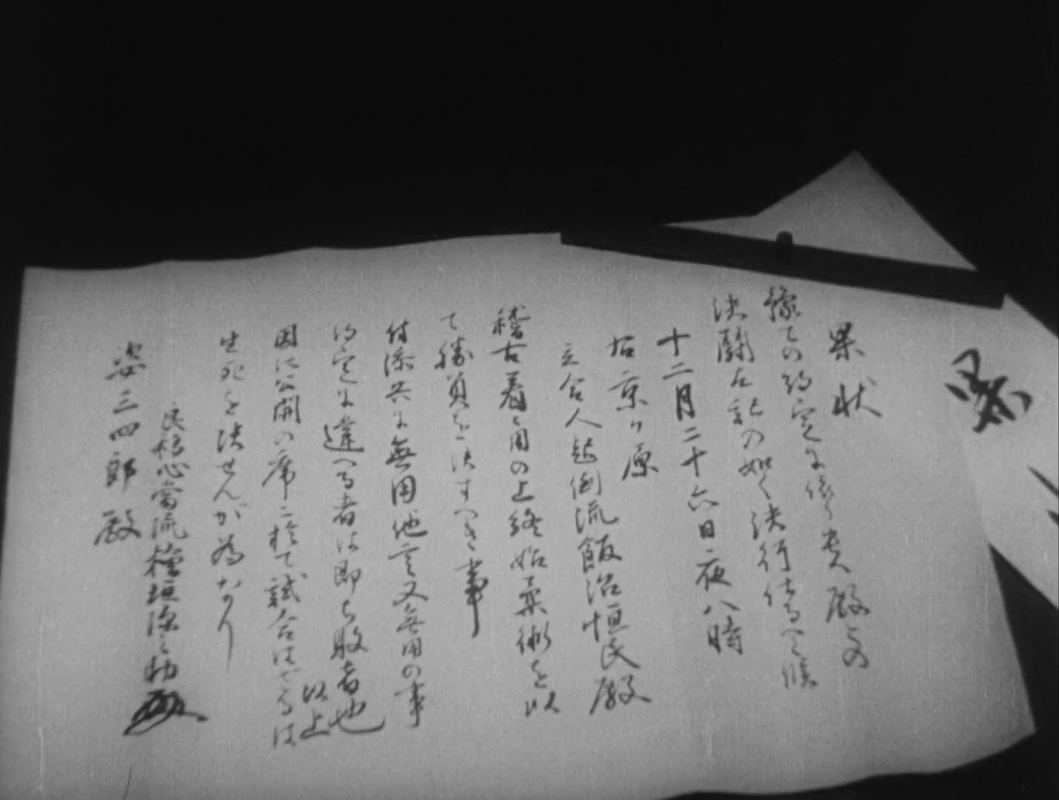
A letter beckoning to come to Ukyō-ku, on December 26, at 8 o'clock. DP: Akira Mimura.
sports
“It's crazy how you can get yourself in a mess sometimes and not even be able to think about it with any sense, and yet, not be able to think about anything else. You get so you're no good for anything or anybody. Maybe it begins by taking life too serious. Anyway, I think that's the way it began for me, just before my fight with Rodriguez three days ago…”Killer's Kiss (Stanley Kubrick, 1955)
Oct
25
Fri

An already worn-out poster for “another great bout” between Davey Gordon and Kid Rodriguez. DP: Stanley Kubrick.
– Davy Gordon
“There's too much on my mind
There's too much on my mind
And I can't sleep at night thinking about it
I'm thinking all the time
There's too much on my mind
It seems there's more to life than just to live it”Summer in the City (Wim Wenders, 1970)
Sep
26
Paul Newman – 2006
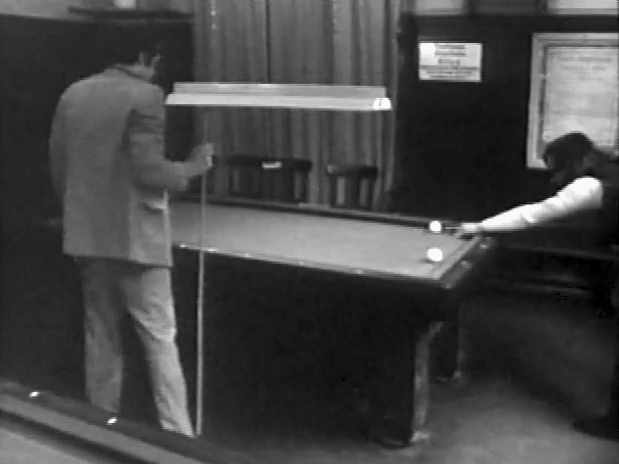
Hanns and Wenders playing billiards. DP: Robby Müller.
Billiards, or Paul Newman (1925 – 2006).
– The Kinks, Too Much On My Mind (from Face To Face, 1966)
Hanns (Hanns Zischler) plays billiards with Wim Wenders.
“Don't ask a dying man to lie his soul into Hell.”The Killers (Robert Siodmak, 1946)
Jul
20
1940
spoiler warning: click to toggle image

The July 21 headline. DP: Elwood Bredell.
– Lt. Sam Lubinsky
“But this art of total synthesis that is Cinema, this fabulous newborn of Machine and Sentiment, is beginning to cease its moans and is entering its infancy. Its adolescence will soon arrive, seize its intelligence, and multiply its dreams; we ask that we hasten its development, precipitate the advent of its youth. We need Cinema to create the total art toward which the other arts have always tended.“Combat de boxe (Charles Dekeukeleire, 1927)
Jun
30
Mike Tyson – 1966
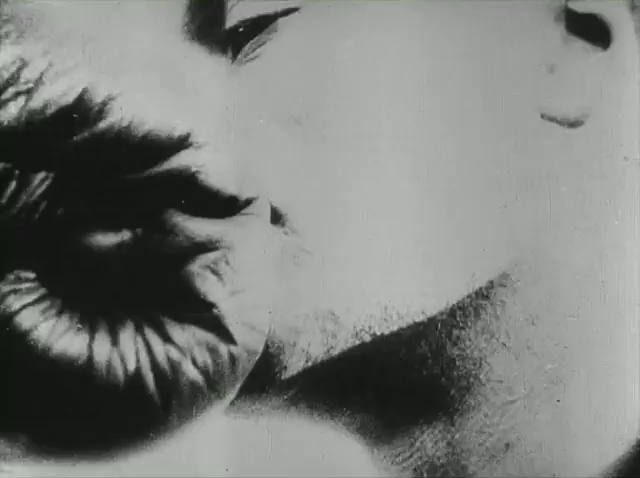
One of the fighters receives a direct hit. The camera is so close that we see abstract shapes, texture and contrast before recognising the scene. DP: Antoine Castille.
A [favourite] athlete in a film role for Mike Tyson's birthday
– Ricciotto Canudo, Gazette des sept arts, 1923 (via)
The match you see is real, between two actual fighters. Paul Werrie's rhythmic poem served as the basis. Everything else is illusion made flesh with what was available. An empty painter's studio, a few friends, footage of a crowd, a deep comprehension of the Kuleshov effect and rapid Soviet-style editing. Dekeukeleire places us from the safe world of the spectator right in the line of fire. But there's no release like in James Williamson's The Big Swallow (1901). Without that gimmick, cinema enters Canudo's realm, as the seventh art.
Sombre (Philippe Grandrieux, 1998)
Jun
3
World Bicycle Day

Cycling fans along the route. DPs: Philippe Grandrieux & Sabine Lancelin.
A film scene with a bike for World Bicycle Day
Jean (Marc Barbé) follows the route of the Tour de France. He sees women, picks them up, takes them out. Claire, infatuated with him, is taken in by his darkness. At night, the cyclists continue the course.
跑道終點 [Pao dao zhong dian / The End of the Track] (Tun-Fei Mou, 1970)
Jun
2
Dennis Haysbert – 1954

Hsiao-Tung and Yung-shen at the track. DP: Chung-Hsin Chen.
A [favourite]* fictional athlete for Dennis Haysbert's birthday (1954).
Close friends Hsiao-Tung and Yung-shen spend their time together, wandering about, eating dumplings, and training for athletics. Until one of them pushes too hard, leaving the other alone in his grief.
* this month's Bales' Challenge is marred with “favourites”, something I don't believe in. Instead, I stick to great cinema and will squeeze in a few LGBT-themed films for Pride Month.
Két félidő a pokolban [Two Half-Times in Hell] (Zoltán Fábri, 1961)
Apr
20
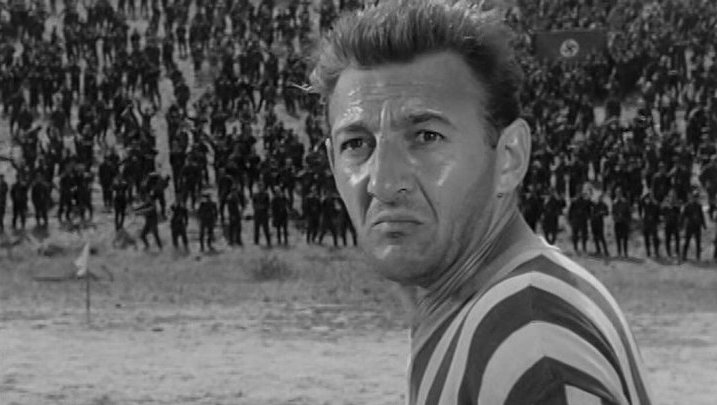
A sour looking player with a flood of Nazis coming towards him. DP: Ferenc Szécsényi.
悲愁物語 [Hishu monogatari / A Tale of Sorrow and Sadness] (Seijun Suzuki, 1977)
Apr
13
1997 Masters Tournament
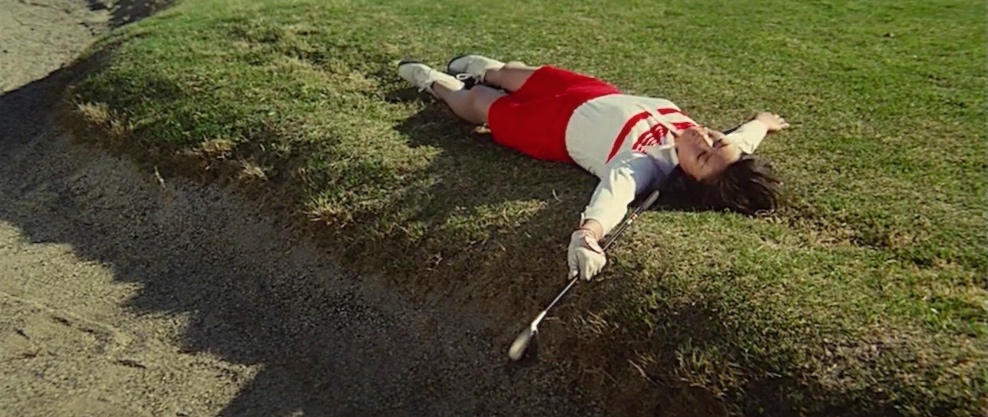
Reiko, looking fabulous, dropped down next to a sand-filled bunker. DP: Masaru Mori.
Golf (or a tiger) in honour of Tiger Woods' 1997 Masters Tournament victory.
Reiko (Yoko Shiraki), a professional model – is groomed into playing the circuit by the editor of a golfing fashion magazine. The rookie's unexpected success draws in all sorts of fans, including the obsessive.
女篮五号 [Nü lan wu hao / Woman Basketball Player No. 5] (Jin Xie, 1957)
Apr
7
March Madness

Tense moments during the match. DPs: Shaofen Huang & Xilin Shen.
Basketball: the final day of March Madness
The first full-colour Chinese sports film and an example of how “state feminism” was promoted through popular media, often in opera but also in more humanist form.